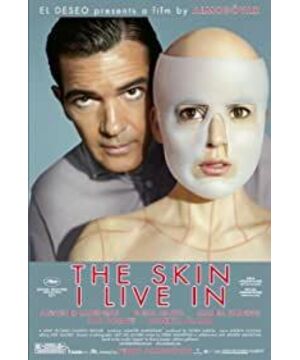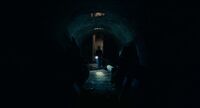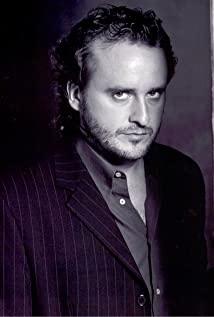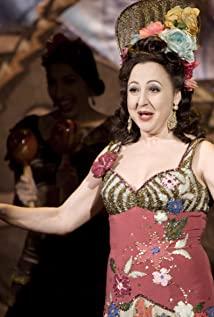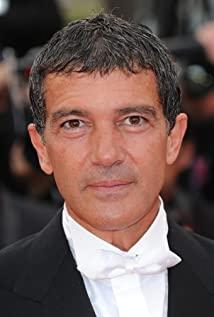[Internal Injury-Pedro Almodóvar on "La piel que habito" (La piel que habito)] Original: Movie Manual (Cahiers du Cinéma) July-August 2011 Issue N°669 Interviewer : Isabelle Zribi Translator: Huang Cancan (France) The translated article is published on the cinephilia website: http://cinephilia.net/archives/9555
1. How did you start with the adaptation of Thierry Jonquet's novel "Mygale" and conceive the structure of this film? "When I am adapting a novel, I will only read it once or twice, not more, because the adaptation requires freedom. As for this film, I did not copy the structure of the original novel, but designed it. This is my unique narrative style. The narrative of the novel is constantly alternating between the mysterious present tense and the insertion of some past fragments, but we are not quite sure which content of those past fragments correspond to. In this book, the most fascinating What I am interested in is: the doctor’s revenge. I hope to express it more realistically and make it more authentic and credible. I am telling a fairy tale: "There used to be a story in the ancient city of Doretto, in a country house... "The movie begins like this: first it is a panoramic shot showing the city of Doreto, and then there is a house in this city, and there is a woman by the window in the house, she puts on some mysterious gestures: she is doing yoga. Then we saw another woman putting the prepared breakfast on the elevator. The third person to appear was the surgeon Robert (Robert Ledgard, played by Antonio Banderas). Prisoner, woman cooking, Doctor, the relationship between the three characters does not seem to have any tension from the beginning, and the audience will be surprised by this. At least I imagine it will. The conspiracy begins with this missing tension: this is my claim to the beginning. At Tiger In the male passage, the narrative takes a turn, because the doctor must make a choice about the prisoner’s situation. This choice also clarifies the fate of other characters. Up to this point, the narrative is still linear, but when the doctor and the prisoner Vera ( Vera (played by Elena Annaya) When they spent the first night together, they slept with their heads on their heads, their thoughts seemed to pass each other, so we flashed back to the past to see how the characters got here. The narrative is divided into The two parts are his and her separate memories. After the audience understands the people's experience, the narrative returns to the main line. This turning point occurs in the middle of the film, and it feels like it has been cut into two pieces. " 2. In the narrative, there are three elements: revenge, the possibility of a love story, and the memory of a dead woman being reborn from another character. But the treatment of these three is not equal, it is better to say that you have choreographed a delicate imbalance. "The plot of revenge is the starting point for me to create this script. It's like a surgeon's excuse. And in my story, revenge actually doesn't make any sense, because rape didn't really happen. But for Doctor Robert, The act of rape is used to prove the existence of social scrutiny and rights trial. The real theme of the film is not revenge, but the abuse of power. Just as there was no rape in the film, the criminal behavior of the surgeon against the young man is unfair. This is also true. It is what some countries and governments often do to find a lot of excuses for committing violent crimes. Research on skin regeneration is much more important than revenge for doctors. In his opinion, it destroys another for research purposes. Human life is perfectly reasonable. But he gave the prisoner a face of his beloved dead wife. At this time I had an opportunity to join the flashback to tell the love between him and his wife. But I prefer to only present a kind of passage His eyes and expressions recalled the way of the past. In the end, all the stories about his ex-wife and family disappeared. Before his eyes was the face of a brand-new creation, not a continuation of his dead wife’s life, but an original The person who was born in his own life, but was destroyed and reshaped by his own hands. The scene in the film conveying this message is when the doctor saw the tiger man rape Vera. He remembered that his ex-wife had had a relationship with this man, at this time He wanted to kill them both together. But when he walked into the room, he first aimed the gun at Vera, then he hesitated, and finally changed his mind and chose to kill only the tiger man. At this moment, he Falling in love with this new creation, this one begged him with his eyes: "Don’t kill me, let me live, I will give everything you want. "The woman. The new object of his desire is Vera. The reason for revenge has disappeared, and the ex-wife has disappeared. This new love story takes their place. The most important thing for me is that everything is reproduced in the film. His past is used for expression. All the path the doctor walks is to get him here and to fall in love with his creation. This unexpected love made him benevolent, even like a child Generally easy to manipulate. At the end of the film, the real survivor Vera returns to her homeland. She has a beautiful skin that does not belong to her, but she has changed back to Vicente. What I want to express is science It is not an entrance. The continuation of the self-identity of soul and existence cannot be manipulated by anything." 3. Regarding the transgender itself, we can imagine the transplantation process in David Conanberg format, accompanied by burnt skin, scars, muscles, etc. . But Elena Annaya's skin is smooth and beautiful. The idea of suturing and scarring wounds is only embodied on the outside, through clothing and masks. There are amazing acts of violence against organs in the film, but everything is clinically clean and calm. "When I was considering the style of the film, I was hesitant between the black and white silent film and the neutral and decorative style of the film now. I don't want to make a bloody film. I hope to use as little blood as possible to express the scene. We only saw scars on the coat equivalent to the second layer of leather. This dress was made by designer Jean Paul Gaultier. In one scene, the surgeon drew lines on the model as if drawing a line. A map, a region like different provinces of a country. We have also seen scars on her upper body. But I don’t want to perform anatomy, even if it is indeed a violent movie to me. The real rape is Wisante The most brutal punishment, severe and continuous rape. However, I still want to behave in a neutral way: I ask my actors not to be decorated, I want a decorative setting, but not a horror-like stage For lighting, I choose to use a palette that is darker than usual colors." 4. Have you really wanted to make a black and white silent film? "Yes, my wish is to make a film that pays tribute to my beloved Fritz Lang, or FW Murnau), with strong contrast and paragraph style. But I quickly gave up this idea. My main film reference was Georges Franju's "Les Yeux sans visage", a non-frightening one. , A lyrical style movie. "5. In what way do you apply this reference to your movie? "I often watch this movie." Inevitably, it will affect me when I write the script. There is a parallel theory here: especially between the character Vera and the character played by Alida Valli. There is also a connection between the use of animal skins to reshape the skin of the disfigured heroine in "Eye without Face", and the two acts of Dr. Robert taking blood samples from pigs in order to obtain information in this film. There are also some commonalities in the pictures and images, like some moments, some people who are going to see us on the set: the legend of Frankenstein (Frankenstein), "Prometheus Bound", Hitchcock Kerr’s "Victoria" and "Butterfly Dreams" seem to have transferred the characters played by Judith Anderson to the characters played by Marisa Paredes. These references are like ghosts and ghosts often haunting the filming scene. 6. In the scene where Vera tried to escape, she wore a black jumpsuit and a white mask, reminiscent of Georges Franju (Georges Franju) better than Louis Feuillade (Louis Feuillade), and Vera looks like a little boy, as if a man wants to become a woman, he must return to the state of a child. "Yes, I ask Elena to act like a boy in this scene. This is the only transitional scene. . I asked her to run like a tomboy, and I used the overhead lens to make people feel like she was a naughty kid. "7. In almost all your films, the art form directly acts on the narrative: songs, paintings, choreography, video, etc. But what interests you the most is not the art forms themselves, but rather the visual effects they exhibit. You often use them as a background to photograph some irrational or passionate characters. For example, in this film, the doctor’s ex-wife died literally in singing, or Vera relied on the works of Louise Bourgeois to adapt to her transgender identity. "Indeed, the appearance of my film is very important, but after all, it is still the character expressing. Art is the sense of history that it carries the most to me, rather than as a documentary appearance. For example, in my film "Speaking to Her" "In ", two men participated in the performance of Pina Bausch's "Cafe Muller" (Cafe Muller), this work helped me express the theme of the film. We can see in it, two wearing white dresses Blind women of mine walked blindly in a cafe full of tables and chairs, and the men hurriedly picked them up to prevent them from bumping into themselves. I use this dance drama to show two women in a subliminal way How deep is the world in a deep coma. At the same time I showed the emotions of two men, one of them was crying, the other did not, when they both returned to the hospital, the man who did not cry was surprised by the cry of the other man, but when he listened When it comes to the singing of Caetano Veloso (Caetano Veloso), we can’t help but wonder. We want to know why, and we will only understand when we rethink the old love story. In "The Skin of My Living" The work of Louise Bourgeois is very important. It allows Vera to survive. I like the work of this plastic artist very much. Many of her works show the coexistence of both sexes. You can often see it in her sculptures. The reproductive organs of both sexes. There are also some works showing women in imprisonment, one of them shows legs, but the upper body is a house. Vera also painted this work on the wall. And Vera made it out of her own clothes The paragraph of the doll makes me feel very touched. The doll’s sewing marks are very heavy, just like the scars she stitched herself. In fact, I want to borrow these works: the first is to show that she is also creating the effect of a person, and the second is It is to breathe new life into the story. Similarly, some songs, film scenes and stage plays all play a role in telling my story." 8. What about movies in movies? "I want to integrate it more dramatically into the film as a whole. For example, I used dubbing twice, in "The Woman on the Edge" and "Broken Embraces." I hate dubbing, but I use it to express The situation of the characters. In "The Woman on the Edge", a woman is a love scene between Sterling Hayden and Joan Crawford in the movie "Johnny Guitar" Dubbing. The man she loved failed to voice Sterling Hayden, so she completed the dialogue by herself. This is the most beautiful story in the movie. She couldn’t hear the man’s "te" that she was expecting. Quiero" (I love you), she can only hear Sterling Hayden’s "I love you" in the earphones. This scene expresses the character’s loneliness. In "Broken Embraces", the husband I also used dubbing when watching the behind-the-scenes footage of my wife’s movie. He asked someone to take the footage of his wife to monitor her whereabouts, but it was counterproductive. When he watched the movie, Penelope Cruz said: " Let go, I will leave you, and you will never see me again.” She herself was speaking the same thing to him at the door. The dubbing added a second scene to the same passage, and the man was abandoned twice.”
View more about The Skin I Live In reviews


